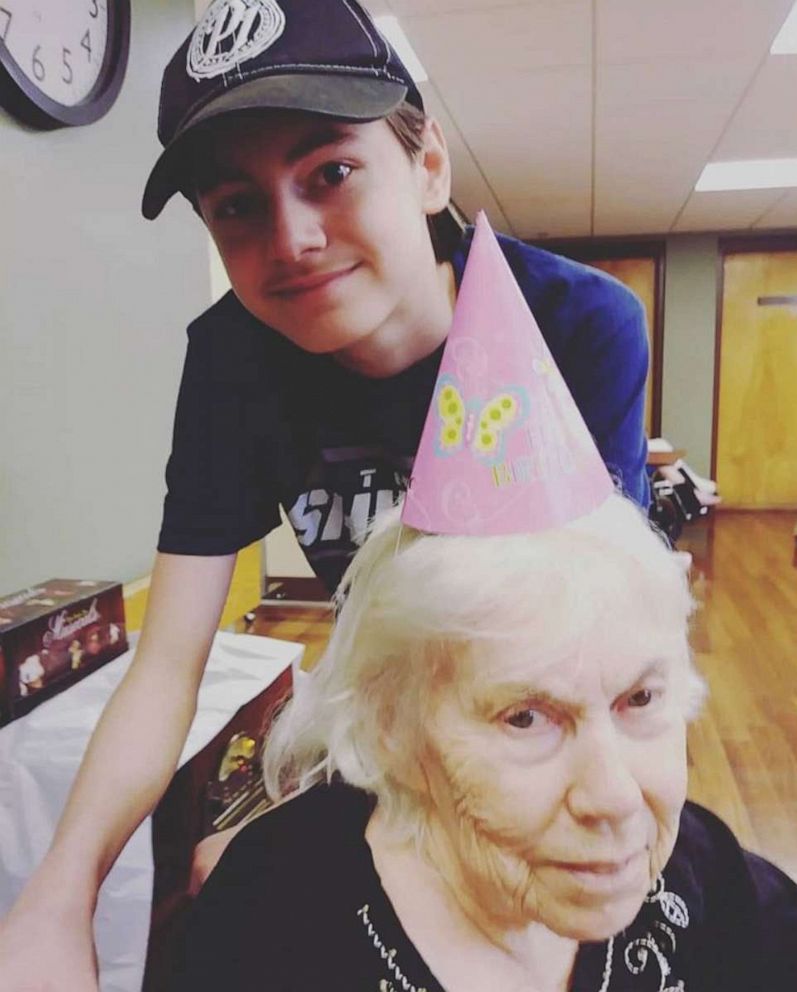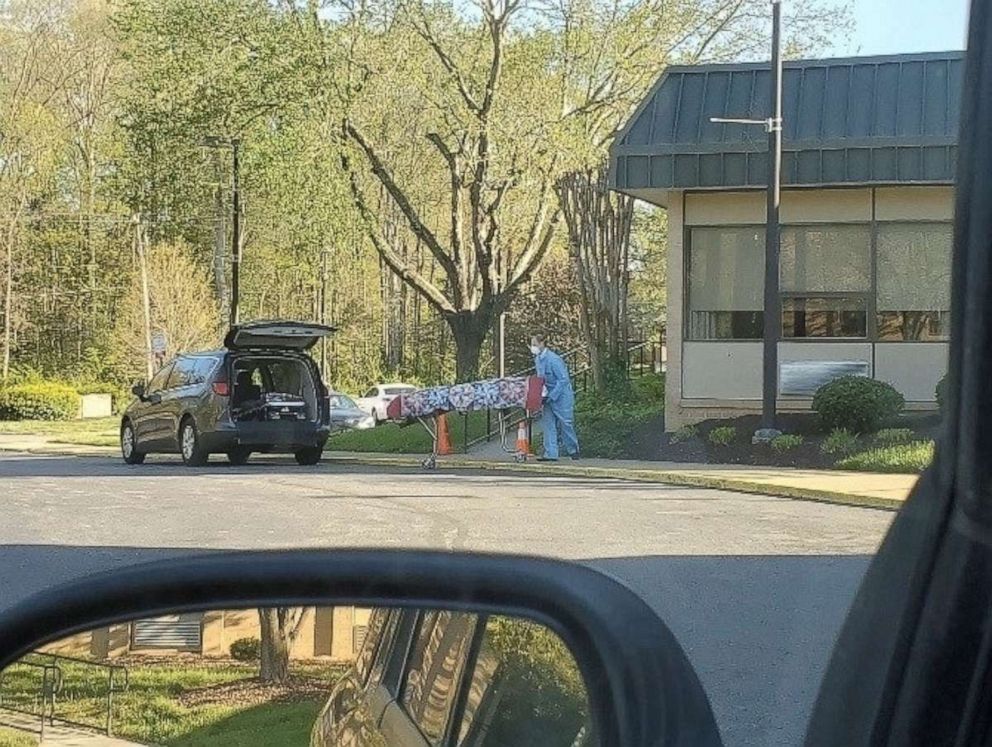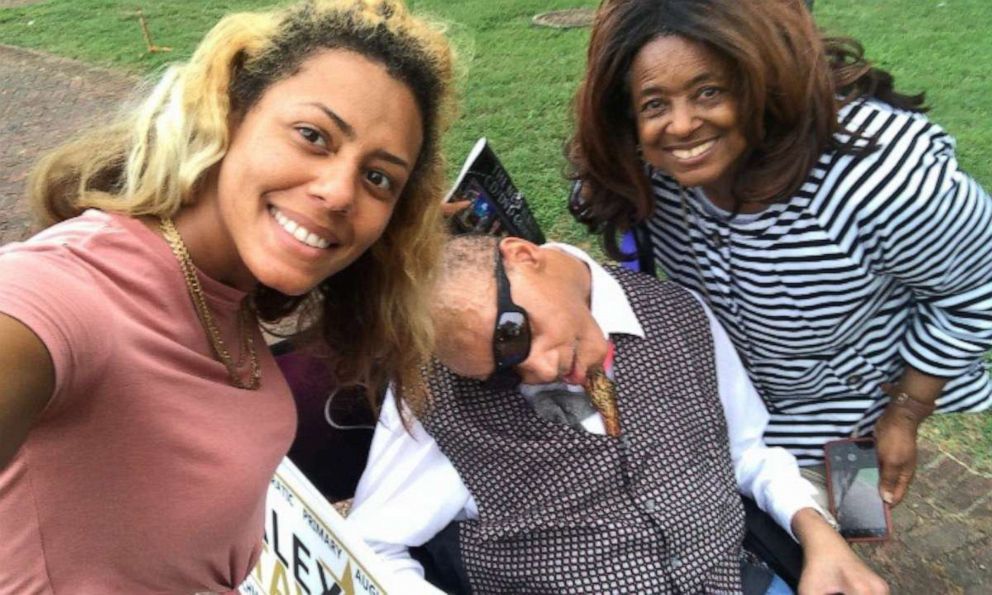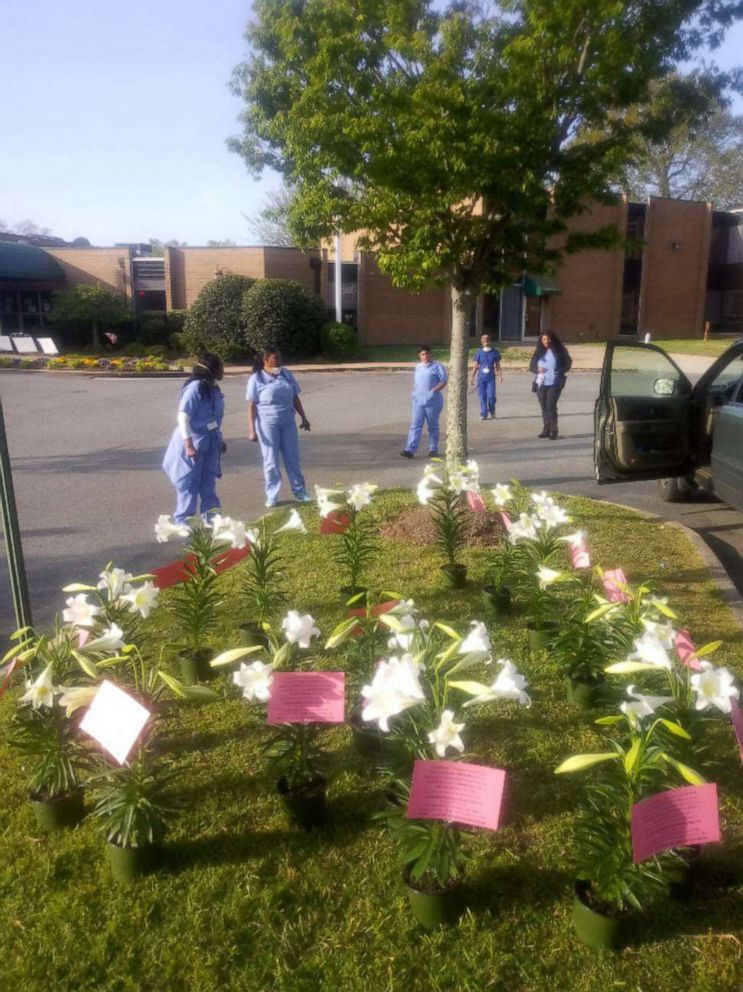Silent killer: Inside the coronavirus outbreak at the Canterbury nursing home
A single Virginia nursing home has seen 45 deaths from the pandemic.
The dispatch calls to Henrico County’s Fire Station 13 at first came in a trickle.
“Breathing problem. Priority one response,” the voice said through the station’s loudspeaker in early March, routing a rescue team to 1776 Cambridge Road.
Then, Fire Capt. Michael Roth said the calls started to become more frequent -- two calls that first week, five in the second, seven in the third week, and 19 during the final week of March. Again and again, paramedics were returning to the same location -- the Canterbury Rehabilitation and Healthcare Center.
“We realized that was going to be a likely hot spot," Roth said.
The two-story, yellow brick senior care center on a leafy street just northwest of Richmond, Va., would see over the ensuing weeks the worst loss of life from the novel coronavirus of any nursing home in the U.S. The first resident at the 140-bed home tested positive on March 18. This report was first published on the morning of April 14 when the death toll stood at 42 people. By the afternoon, the home announced it had risen to 45.
The unfolding outbreak at Canterbury is a tragedy that is replicating across the country, public health experts said – the tale of an insidious virus that spreads before anyone knows it’s there, attacking the nation's most vulnerable.
Early on, COVID-19 lurked silently inside the Canterbury nursing home. When the entire population was finally screened, more than three weeks after the first resident fell ill, 60% of those testing positive had yet to show any symptoms.
Only now, public officials said they realize that their defenses were porous. They underestimated a virus that would prey on seniors in institutional setting, and they are just starting to learn the lessons that could save lives elsewhere.

“Emergency response calls to a senior living facility are not unusual, but when you see a spike it means we should be digging in deeper,” said U.S. Sen. Tim Kaine, a Virginia Democrat who once served as Richmond’s mayor. “These are the kinds of things that we have to learn from as we go forward with respect to these senior living facilities across the United States.”
As coronavirus strikes other nursing homes, rising fear and delayed testing
Julie Addington’s mother, Peggy Winckler, was 84 years old when she moved into the nursing facility three years ago because she had begun suffering the debilitating effects of dementia. At the time, Canterbury Rehabilitation and Healthcare Center was called Lexington Court, and it was privately owned. It was purchased last year by New Jersey-based Marquis Health Services, which runs 30 nursing and rehabilitation centers around the country.
“Things were nice,” Addington said. “Most rooms are two people but the staff did a good job keeping it clean. The downstairs dining room was also where they did a lot of the activities: Bingo, movies, music, Bible studies, games, monthly birthday parties. And they also have a hair salon downstairs.” Upstairs, she said, was a memory care unit that is locked to prevent people from wandering off -- even the elevators require a special code to operate.

Addington said there was a general sense of unease in early March, when word of the widening pandemic began to circulate and after nursing homes had shown to be especially susceptible. The staff at Canterbury began taking the first early measures to fortify the facility, similar to those being adopted at senior care centers around the country. Nurses started conducting temperature checks at the end of every worker’s shift, and Canterbury imposed restrictions on visitors beginning March 13.
Addington was one of the last outsiders allowed to enter on March 14, when her mother’s health was deteriorating.
“My son and I, as well as one of our pastors got in to see her that day,” she said.
Late the following night, the home called to say her mother had died. Addington does not believe coronavirus was the cause, though neither she nor anyone else at Canterbury realized what they now know -- that the virus had already gained a foothold inside.
When Addington returned to Canterbury on March 16 to pack her mother’s room, she was denied entry. “A nurse packed her things and brought them down to me," she said.
Three days later, Dr. Danny Avula, the Richmond health director, sent a team to the nursing home to assess the crisis. Avula knew that senior care facilities were emerging as uniquely vulnerable targets for this virus. Early numbers out of Italy were showing Covid-19 was highly contagious and deadliest among the elderly.
Avula turned for advice to health officials in Kings County in Washington State, where the first major coronavirus outbreak in a U.S. nursing home struck. There the virus had raced through the Life Care Center in the city of Kirkland, killing 37 residents.
“None of us has dealt with this before,” Avula said. “We're all learning and we need to learn from each other.”
Their recommendation, he said, was to test everyone in the facility. But Avula said conducting the tests was easier said than done. Because the state had such limited access to test kits, there were strict criteria in place for whom could be tested.
“They needed to set a threshold and so, at the time, if you were living in a long term care facility and you were showing symptoms you also had to have negative tests for flu and for the respiratory viral panel,” Avula said. All of those steps would take time – time he said the Canterbury residents did not have.
“In retrospect, that probably contributed to some spread,” he said.
By March 19, Canterbury staff had cleared out one wing of the facility to serve as an isolation unit, where any residents showing signs of fever or cough would be moved. That day, five residents were being treated in the isolation wing.
It was not until March 30 that all of the residents were screened with approval from health officials. On April 2, the results came back. Of the 92 residents who tested positive, 53 still showed no symptoms. By then, Canterbury reported that 16 people had already died from the virus.
“It's hard to know in the week or two weeks prior to this [discovery] how much potential transmission had been taking place, and I think that's the real challenge that all of us are facing with COVID-19,” Avula said. “So many people are spreading the virus before you even have symptoms, and I think that's clearly what's happened there at Canterbury.”
By the end of the month, the head of the Centers for Disease Control and Prevention would say that as many as one in four people who have coronavirus may not show any symptoms.
Impossible choices and quiet deaths inside the facility
The population of the Canterbury nursing home varied. Some residents were already quite frail before the virus showed up, Avula said. And when the virus began its march around the facility, many relatives of those inside had to confront a hard decision.
Avula said he and the medical team at Canterbury began to wonder if it made sense to hospitalize the very sickest residents, when the chance of survival was so low.
“After that first weekend where we'd gone from one to four to seven cases, I got a call from the healthcare system who said you know, we really should think about what's happening here because we're seeing such rapid spread, and most of these cases are coming to our emergency room,” Avula said. “It really spurred on the question: does it make sense for elderly residents with lots of underlying health conditions who likely will not make it through COVID-19 to come here for us to try to resuscitate them for us to put them on a ventilator and then ultimately to see them pass away?”
As they grappled with the growing array of bad options, officials said they had to factor in the risks associated with transporting frail patients to area hospitals. The frequency of calls to the fire department was picking up, every transport was posing a new threat to first responders and taxing resources in the emergency room. But Henrico County fire officials said they were committed to responding, no matter the threat.
Emergency crews called to Canterbury developed a strategy, Capt. Roth said: When the nursing home called 911 for a struggling resident, the dispatcher would ask staff to move the patient into the front lobby, “and actually bring them right to the door so that we're minimizing cross-contamination.”
Then one paramedic would put on a respirator and protective clothing, and enter the lobby to assess the patient. Only in the most dire cases, Roth said, would the team risk transport. “For somebody who may be having significant difficulty breathing, something like that, they're still being transported,” Roth said. “But what we've tried to do is shift as much treatment as possible to remain in-house.”
The nursing home tried to find the most ethical and humane solution for their sickest residents, which they believed often meant staying home. Avula said the medical director at Canterbury is married to a physician who specializes in palliative care – aimed at bringing comfort to those who are nearing death.
“So she volunteered her time for a couple of weeks to go in and help set up the type of end of life comfort care with the residents of that facility and their families,” Avula said. Many of the Canterbury families, he said, reached the difficult decision to sign “do not intubate” agreements -- meaning if the patient's breathing failed, they were not to be put on a ventilator.
“And so at this point, I think, probably more than half of the residents who have who have passed away have done so at the facility and not gone to the hospital,” Avula said.
When Paul Locke drove to the Canterbury April 9 to drop off iced tea for his mother, who is suffering from dementia and remains inside the nursing facility, he saw the grim evidence with his own eyes. As he sat in the driveway in his car, he watched a member of the Canterbury staff in blue coveralls and a mask wheel out a deceased resident, wrapped from head to toe in a red and blue decorative quilt.

None of the decisions were easy, Canterbury Medical Director Dr. Jim Wright said. The decision to care for patients inside the facility took a terrible toll on everyone inside.
“To see a resident pass, and to have nothing that you can do to prevent that from happening other than offering comfort and palliative care is traumatic,” Wright said at an April 10 press conference. “I mean there's nothing but trauma when that happens. Every death -- we die a little bit with every death that occurs in our facility.”
Thoughts of sending the uninfected away, but to where?
For those with loved ones who remained inside Canterbury, a nagging question began to surface as the headlines in the local paper announced more Canterbury deaths with each passing day: Could someone rescue their relative before they became the next victim?
That’s what Bernice Stafford-Turner wanted to know, as she began sending letters to public officials. Her 68-year-old younger brother Fred Lee Stafford moved into the nursing home a little more than two years ago. He had been struck by a car when he was three, and was beset by significant developmental problems ever since.
Stafford-Turner, an attorney, said her brother was able to graduate high school and live independently, but always with help from her and other family members. In recent years, though, as his needs grew, the family agreed that a nursing care setting would be safer for him.
Now, he was living on a second floor unit inside Canterbury, and because his ability to communicate is so limited, she had no easy way to tell how he was doing.
“I'm very concerned about his emotional state while he's there because this facility, appears to be overwhelmed and the nurses won't have time to just sit down and talk to him and have a conversation with him,” Stafford-Turner said.

Canterbury set up a toll-free phone number for relatives to call to check in on residents, and to schedule video calls, she said. But that form of communication does not work for everyone.
In letters to public officials and to doctors at Canterbury, Stafford-Turner asked whether those remaining inside could be moved somewhere safer. Health officials in Los Angeles County had taken that approach when homes there started showing vulnerability, calling on family members who could manage it to consider retrieving their loved ones.
But for people like her brother, who may need more intensive care than a relative can offer, she wanted to know if other facilities could be persuaded to accept transfers.
“At this point, the residents need to be sent to a higher level of treatment and they need to be monitored and protected,” she later told ABC News.
Avula said Henrico County health officials began to consider that option once they knew from testing that 70% of the residents had been exposed.
“We immediately went to, 'What do we do for the 30%?'” Avula said. “Should we keep them isolated on a unit of this facility where, where they're cohorted together? Do we start trying to figure out is there a solution to try to transfer these patients out?”
The problem, he said, was that no other nursing facility would take the risk of accepting transferred residents. They considered renting out a hotel to temporarily house those who were still healthy, but that created other problems.
“This is a population that has a lot of needs,” he said, noting that many of them require around-the-clock care, and some are kept on a locked wing because of the risk they could walk away. “A hotel would be a really difficult place to stand up that kind of support system in pretty short order.”
In the absence of another solution, Stafford-Turner’s daughter, Precious, said she began trying to find other ways to get messages of comfort to her brother. Over Easter weekend, she set out dozens of bouquets of lilies into a display on the nursing home lawn, forming a heart that could be seen from her brother’s window. Precious planned a delivery Wednesday of carnations to the home – one for every resident inside.

Wright, the Canterbury medical director, said as wrenching as this outbreak has been for those under his care, he believes the worst is now behind them.
“I think the atmosphere now is one of hope,” he said. “Staffing levels are up, there's a lot of activity going on in the facility. We have cleaning crews that are disinfecting everything, almost around the clock. The residents see the signs that we are nearing the end of the crisis.”
Senator: 'It could happen anywhere'
Rep. Abigail Spanberger represents the residents of the Canterbury home in Congress, and said she has been shaken by what occurred there.
When lawmakers set out to approve funding for a response to the global pandemic, she was among a bipartisan group of lawmakers from Virginia who wrote to Alex Azar, Secretary of the Department of Health and Human Services, urging him to allocate funding for nursing homes.
Of the $100 billion Congress allotted for hospitals and medical facilities as part of the $2 trillion coronavirus rescue package, Spanberger and her colleagues said they wanted the agency to ensure that a quarter of those funds -- $25 billion -- would go directly to providing relief to skilled nursing and assisted living to address the “lack of health care workers” and “increased need for essential supplies” in these facilities.
Spanberger, a Democrat, said she wants more than money spent to prevent similar outbreaks from occurring in the future.
"I hope at every level we will spend a significant amount of time doing a deep dive review into lessons learned,” she said. “What we as Americans did right. What we could do better at … How did they mitigate the risk? Did they take steps at the right time?"
One clear lesson, Stafford-Turner said, is that the world needs to do better by those seniors who need care in an institutional setting.
“I'm really thinking that, if we want to do justice for the elderly, the helpless and the disabled, we really need to take the necessary steps to save their lives,” she said.
She made that appeal in letters to public officials at every level, including to Sen. Kaine. Kaine told ABC News he has taken those appeals seriously, and is giving thought to how the state can better protect and help those seniors who are bearing the brunt of the outbreak.
“I think the lesson from Canterbury is if it could happen there it could happen at any senior living facility and so it probably calls to mind a broader set of issues about things like salaries that are paid to folks who work there and a need for them to have multiple jobs and does that elevate risk factors,” Kaine said.
“I'm always struck in my life that we say our children and our parents are most important to us, but what are two of the lowest paid professions in this country? Those who care for young kids, childcare providers and those who care for our parents and grandparents,” he said.
That same admonition came after Canterbury reported the fortieth death of a resident on April 10, from the nursing facility’s medical director, Dr. Wright. He said that when this pandemic has passed, the American public may need to consider whether there is a better approach than to “warehouse our elders, and to put them in small spaces, to underpay their staff so that there are chronic staffing shortages.”
“I think if we see that that is an adequate treatment of our elders then we are going to have a bad time,” Wright said. “We're going to see this over and over again.”
Avula said he is committed to making sure that does not happen, and has begun crunching data and information from the Canterbury outbreak to better understand what went wrong. He may only be starting to digest the lessons from this losing battle against the coronavirus. But he knows he needs to learn fast.
Nursing homes are fast emerging as a major source of fatal cases in the national COVID-19 outbreak. Just Monday, Los Angeles County health officials estimated that senior care residents account for 29% of all deaths from the virus. Massachusetts officials said that nearly half of the more than 800 coronavirus-related deaths in the state were at long-term care facilities.
Just as he called Washington State officials when he started to show signs of viral spread in Richmond, Avula said officials from other states have now started calling him – wanting to know how they can avoid becoming the next Canterbury.
He said the state has formed a task force to consider whether it would help to test the entire nursing home population, even before residents show symptoms, or whether relatives should be asked to consider moving their loved ones at the first sign of an outbreak.
“I think there will be additional steps we can take in the days to come, that will hopefully keep other facilities from having the severe impact that Canterbury rehab has had,” Avula said.
But still the fate for Cantebury residents like Fred Stafford remain uncertain.
On March 26, his niece said, the nursing facility called to say that while he showed no symptoms, he had tested positive.
What to know about Coronavirus:
- How it started and how to protect yourself: Coronavirus explained
- What to do if you have symptoms: Coronavirus symptoms
- Tracking the spread in the U.S. and worldwide: Coronavirus map
ABC News's Dylan Goetz and Matthew Seyler contributed to this report.
This report was featured in the Wednesday, April 15, 2020, episode of “Start Here,” ABC News’ daily news podcast.
"Start Here" offers a straightforward look at the day's top stories in 20 minutes. Listen for free every weekday on Apple Podcasts, Google Podcasts, Spotify, the ABC News app or wherever you get your podcasts.




